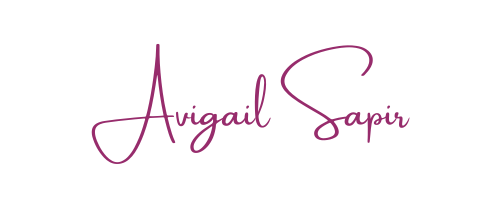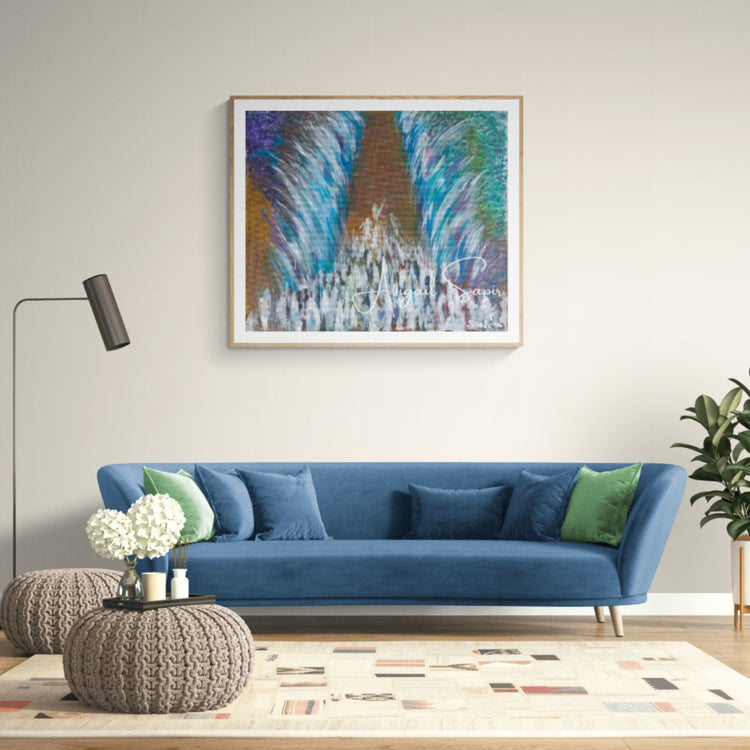Make Your Moment Last Forever
-
The Splitting of The Sea
Regular price From $65.00 USDRegular priceUnit price per
Passover Art: A Celebration of Diversity, Richness, and Inspiration
Passover art is a fascinating subject that reflects the diversity and richness of Jewish communities and cultures around the world, as well as the influence of Passover themes and motifs on Jewish artists such as Marc Chagall, Ben Shahn, and Arthur Szyk. In this essay, I will explore these two aspects of Passover art and provide some examples of how they manifest in different media and styles.
Passover is one of the most important and celebrated holidays in Judaism, commemorating the liberation of the Israelites from slavery in ancient Egypt. The story of the Exodus, the ten plagues, the splitting of the Red Sea, and the giving of the Torah at Mount Sinai are central to Jewish identity and faith. Passover art is a way of expressing and celebrating these events and their meanings through various forms of visual and creative arts.
One of the most remarkable features of Passover art is its diversity and richness across different Jewish communities and cultures around the world. Jews have lived in many countries and regions throughout history, adapting to different languages, customs, climates, and influences. This has resulted in a variety of artistic expressions of Passover that reflect the local context and identity of each Jewish community.
For example, Passover art from Ethiopia, where Jews have lived for centuries, often features colorful paintings and embroideries depicting scenes from the Exodus story, such as Moses leading the Israelites out of Egypt or crossing the Red Sea. These artworks use bright colors, geometric patterns, and stylized figures that are characteristic of Ethiopian art.
Another example is Passover art from India, where Jews have also lived for a long time, especially in Mumbai and Cochin. Indian Jewish artists have created beautiful paintings, sculptures, and textiles that incorporate elements of Indian art, such as floral motifs, intricate designs, and vibrant colors. Some of these artworks also show the influence of Hinduism and Buddhism on Indian Jewish culture.
A third example is Passover art from Morocco, where Jews have a rich and ancient history. Moroccan Jewish artists have produced stunning works of metalwork, woodwork, ceramics, and leatherwork that display the craftsmanship and skill of Moroccan artisans. These artworks often feature motifs such as stars, crescents, palms, lions, and birds that symbolize protection, prosperity, and royalty.
These are just some examples of how Passover art varies across different Jewish communities and cultures around the world. There are many more examples from other countries and regions, such as Spain, Italy, Poland, Russia, Iran, Iraq, Yemen, Turkey, China, and America. Each one has its own unique style and flavor that reflects its history and heritage.
Another aspect of Passover art is its influence on Jewish artists such as Marc Chagall, Ben Shahn, and Arthur Szyk. These artists were among the most prominent and influential Jewish artists of the 20th century who used their talents to express their Jewish identity and values through their artworks. They also drew inspiration from Passover themes and motifs to create powerful and poignant works that convey their personal and collective experiences.
For example, Marc Chagall (1887-1985) was a Russian-French artist who is widely regarded as one of the greatest modern painters. He is known for his colorful and dreamlike paintings that blend elements of Cubism, Expressionism, Surrealism, and Fauvism. He also used biblical imagery and symbolism to depict his love for his wife Bella, his nostalgia for his childhood in Vitebsk, and his sorrow for the persecution of Jews in Europe. He created several paintings related to Passover, such as The Exodus (1952-1966), The Crossing of the Red Sea (1952-1966), and The Feast of Passover (1969). These paintings show his mastery of color, composition, and emotion to portray the drama and joy of the Exodus story.
Another example is Ben Shahn (1898-1969), an American artist who was born in Lithuania and immigrated to New York when he was eight years old. He is known for his social realism and activism that reflected his concern for human rights and social justice. He also used Jewish themes and symbols to express his identity and faith in his artworks. He created several works related to Passover, such as The Haggadah (1965-1966), a series of 24 lithographs that illustrate the Passover Haggadah text with his distinctive style and commentary. He also created The Four Questions (1954), a painting that depicts a young boy asking the traditional questions at the Seder table with his family.
A third example is Arthur Szyk (1894-1951), a Polish-American artist who was a master of miniature painting and illumination. He is known for his detailed and intricate works that combine elements of medieval and Renaissance art with modern and political themes. He also used his art as a weapon and a voice to fight against fascism and anti-Semitism during World War II. He created several works related to Passover, such as The Szyk Haggadah (1934-1936), a masterpiece of Jewish art that contains 48 paintings that illustrate the Passover Haggadah text with his superb skill and symbolism. He also created The Ten Plagues (1940), a series of 10 drawings that depict the plagues of Egypt with his satirical and allegorical style.
These are just some examples of how Passover themes and motifs influenced Jewish artists such as Marc Chagall, Ben Shahn, and Arthur Szyk. There are many more examples from other Jewish artists, such as Moritz Oppenheim, Maurycy Gottlieb, Isidor Kaufmann, Max Weber, Camille Pissarro, Amadeo Modigliani, and Mark Rothko. Each one has their own unique vision and expression that reflects their artistic genius and Jewish spirit.
In conclusion, Passover art is a fascinating subject that showcases the diversity and richness of Jewish communities and cultures around the world, as well as the influence of Passover themes and motifs on Jewish artists such as Marc Chagall, Ben Shahn, and Arthur Szyk. Passover art is a way of celebrating and commemorating the Exodus story and its meanings through various forms of visual and creative arts. Passover art is also a way of expressing and exploring Jewish identity and values through artistic expression and inspiration.



